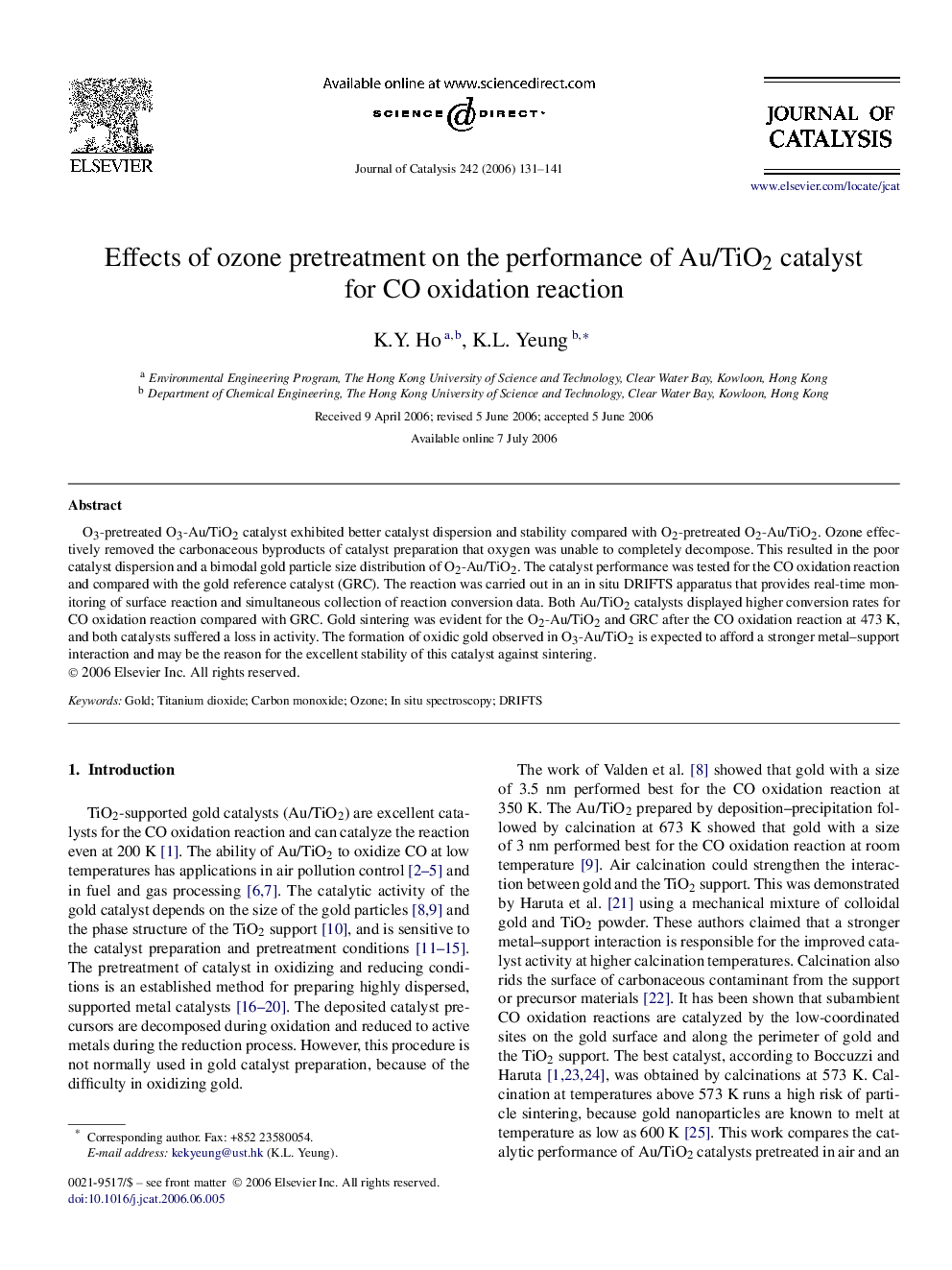| Article ID | Journal | Published Year | Pages | File Type |
|---|---|---|---|---|
| 63468 | Journal of Catalysis | 2006 | 11 Pages |
O3-pretreated O3-Au/TiO2 catalyst exhibited better catalyst dispersion and stability compared with O2-pretreated O2-Au/TiO2. Ozone effectively removed the carbonaceous byproducts of catalyst preparation that oxygen was unable to completely decompose. This resulted in the poor catalyst dispersion and a bimodal gold particle size distribution of O2-Au/TiO2. The catalyst performance was tested for the CO oxidation reaction and compared with the gold reference catalyst (GRC). The reaction was carried out in an in situ DRIFTS apparatus that provides real-time monitoring of surface reaction and simultaneous collection of reaction conversion data. Both Au/TiO2 catalysts displayed higher conversion rates for CO oxidation reaction compared with GRC. Gold sintering was evident for the O2-Au/TiO2 and GRC after the CO oxidation reaction at 473 K, and both catalysts suffered a loss in activity. The formation of oxidic gold observed in O3-Au/TiO2 is expected to afford a stronger metal–support interaction and may be the reason for the excellent stability of this catalyst against sintering.
